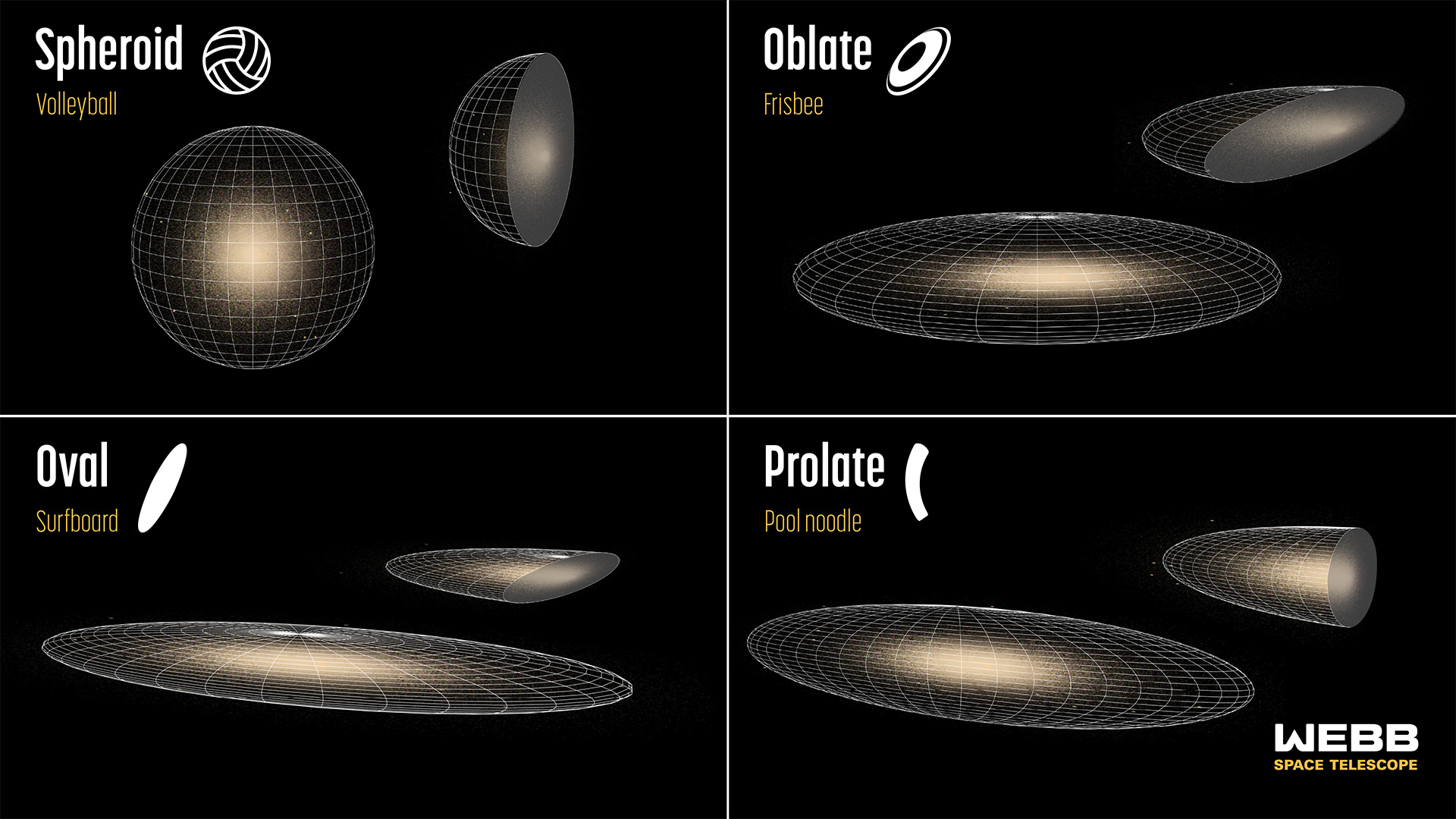What did the galaxies in the early universe look like? Researchers now think they have a clearer idea, and like many of us in the Northern Hemisphere are battling with freezing temperatures and dreaming of summer. So, in their beach-themed analogy, galaxies at the edge of what we can see are close in shape to pool noodles and surfboards.
The occasional frisbee or volleyball-shaped galaxy appears in the data, with frisbees becoming more and more common with time. Most of these objects are flatter compared to the galaxies we see today, most of which have either got a spiral structure or an elliptical one (like those volleyballs but much bigger).

Shapes of galaxies seen by JWST.
Image Credit: NASA, ESA, CSA, Joseph Olmsted (STScI)
“Roughly 50 to 80 percent of the galaxies we studied appear to be flattened in two dimensions,” explained lead author Viraj Pandya, a NASA Hubble Fellow at Columbia University, in a statement. “Galaxies that look like pool noodles or surfboards seem to be very common in the early universe, which is surprising, since they are uncommon nearby.”
Elongated galaxies were already spotted in the deep Hubble data. JWST confirmed those observations and showed that even more distant galaxies have those characteristic shapes – important insights into how these early galaxies formed.
“In the early universe, galaxies had had far less time to grow,” said Kartheik Iyer, a co-author and NASA Hubble Fellow also at Columbia University. “Identifying additional categories for early galaxies is exciting – there’s a lot more to analyze now. We can now study how galaxies’ shapes relate to how they look and better project how they formed in much more detail.”
The current beachware range might not be all that there is out there. Researchers admit that there are still major gaps in our knowledge of these distant cosmic objects. JWST will continue to see deeper and wider and find many more of these early galaxies.
“These are early results,” said co-author Elizabeth McGrath, an associate professor at Colby College in Waterville, Maine. “We need to delve more deeply into the data to figure out what’s going on, but we’re very excited about these early trends.”
A paper with these results is submitted to The Astrophysical Journal and available on the Arxiv.
Source Link: Galaxies In The Early Universe Were Shaped Like Pool Noodles And Surfboards